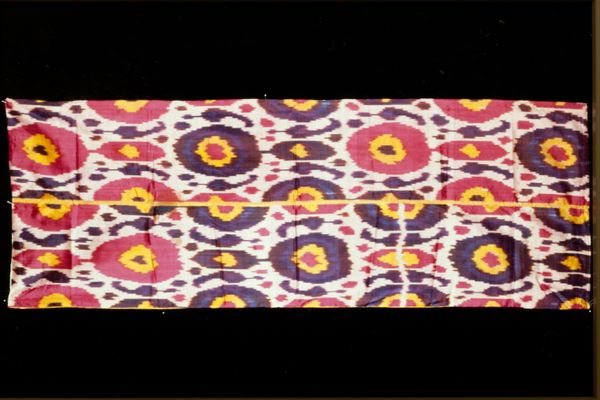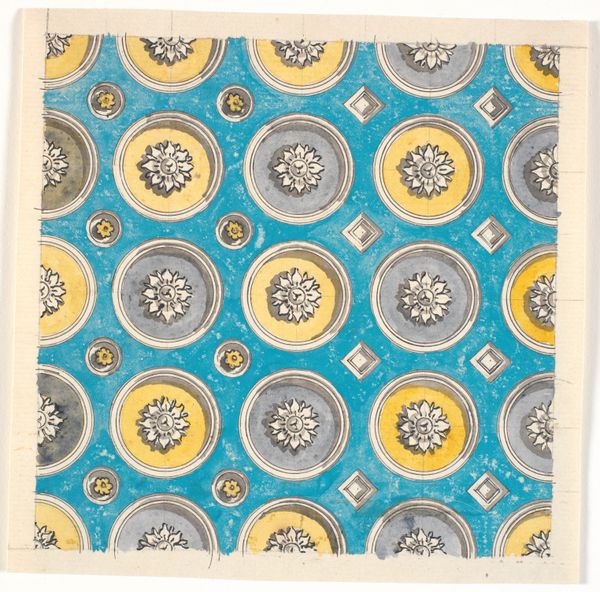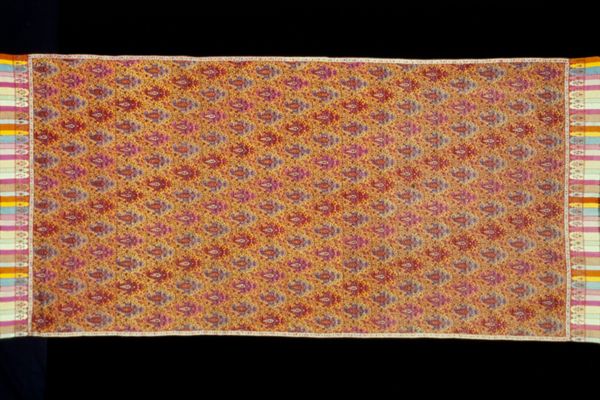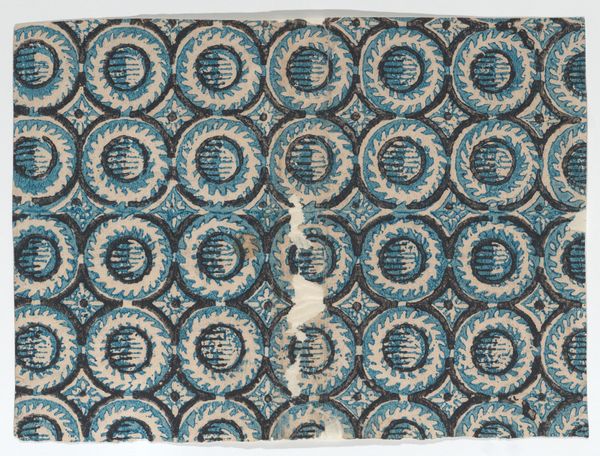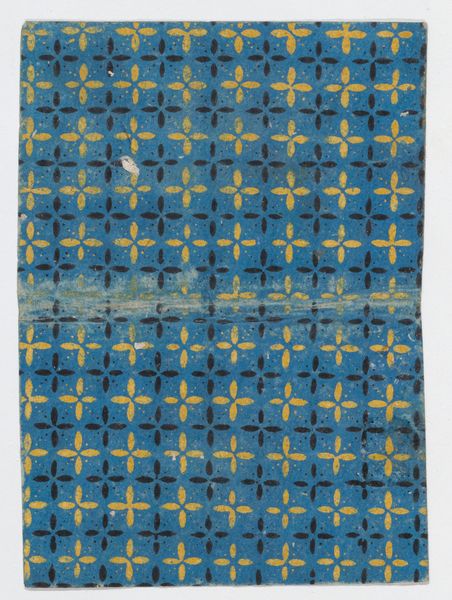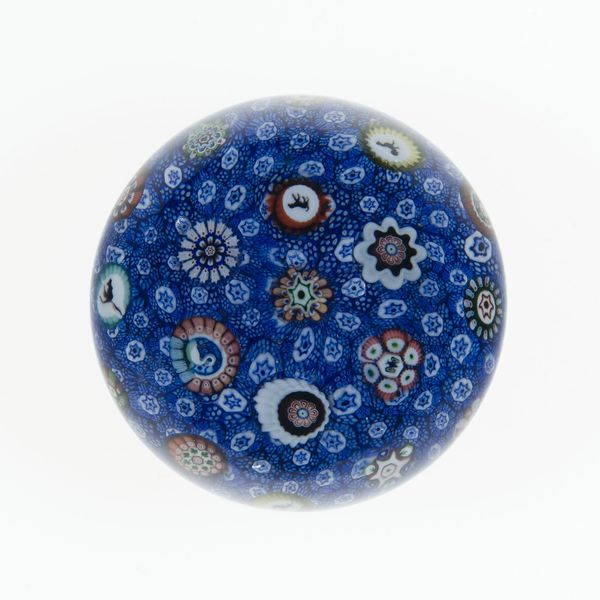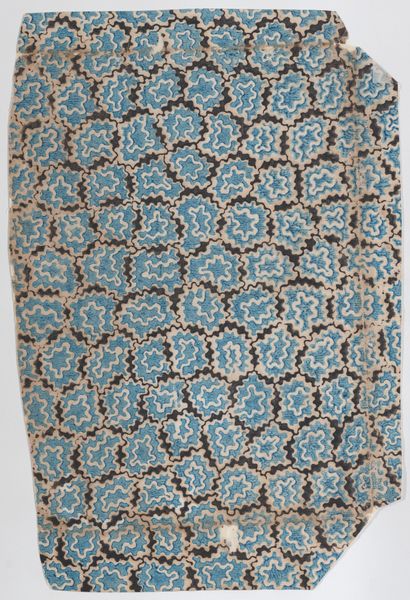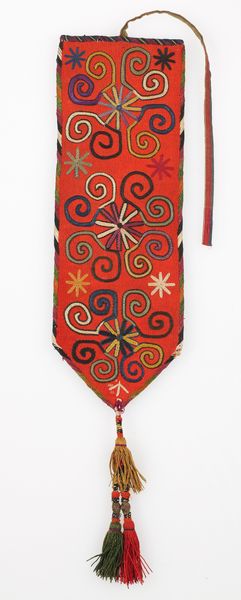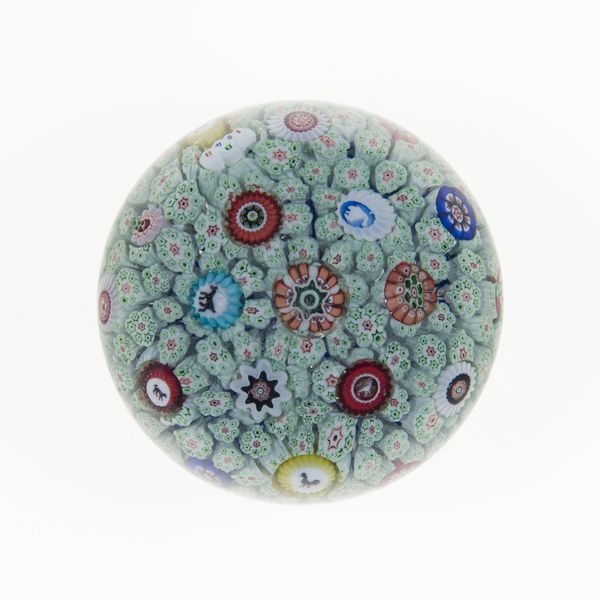
Copyright: Jennifer Bartlett,Fair Use
Curator: Wow, look at this! At first glance, I'm just swept up in a hypnotic rhythm of colors, aren't you? Like, a garden viewed through a kaleidoscope. Editor: Indeed! What you’re seeing there is “Diminishing Circles,” an acrylic on canvas piece from 2001 by Jennifer Bartlett. It's a really interesting exploration of pattern and scale, especially given its position within modern abstract-expressionism. Curator: Abstract expressionism makes it sound so serious! I get the urge to play. Look how the circles seem to march upwards, shrinking as they go, a total optical illusion! There is just something that pulls you into the art. Editor: It’s true that the almost mathematically precise execution contrasts the inherent expressiveness you often find in abstract painting. But the pattern suggests order; it hints at how systems of power operate. Curator: Systems of power? I can also agree to the contrary with that viewpoint because to me, that's a big stretch for these bubbly shapes. Editor: Okay, yes, these are more bullseye-like rather than bricklike; these circles disrupt the grid’s implied rigidity and potentially echo other feminist artists also questioning restrictive constructs around art practice by working with materials that carry craft associations. What it speaks about is that even if someone can point things in a singular manner doesn't take away the potential of art. Curator: Ooh, now there’s a thought. Editor: When we view work produced in series we might think, is it about standardization, consumption, what meanings are available to people and which ones aren’t. Curator: Now you’ve completely changed the perspective on the use of different materials, which will leave lasting effects on our generation in terms of understanding art! So it makes the artist even more cool now, right? Editor: Exactly! Bartlett engages with her historical moment while giving us, as you said, a garden of optical play. Curator: Absolutely! Art's a dialogue, a journey. We bring our perspectives to it. And who knows, maybe someone sees something completely different—the joy of circles, the grid itself, and how shapes play.
Comments
No comments
Be the first to comment and join the conversation on the ultimate creative platform.

